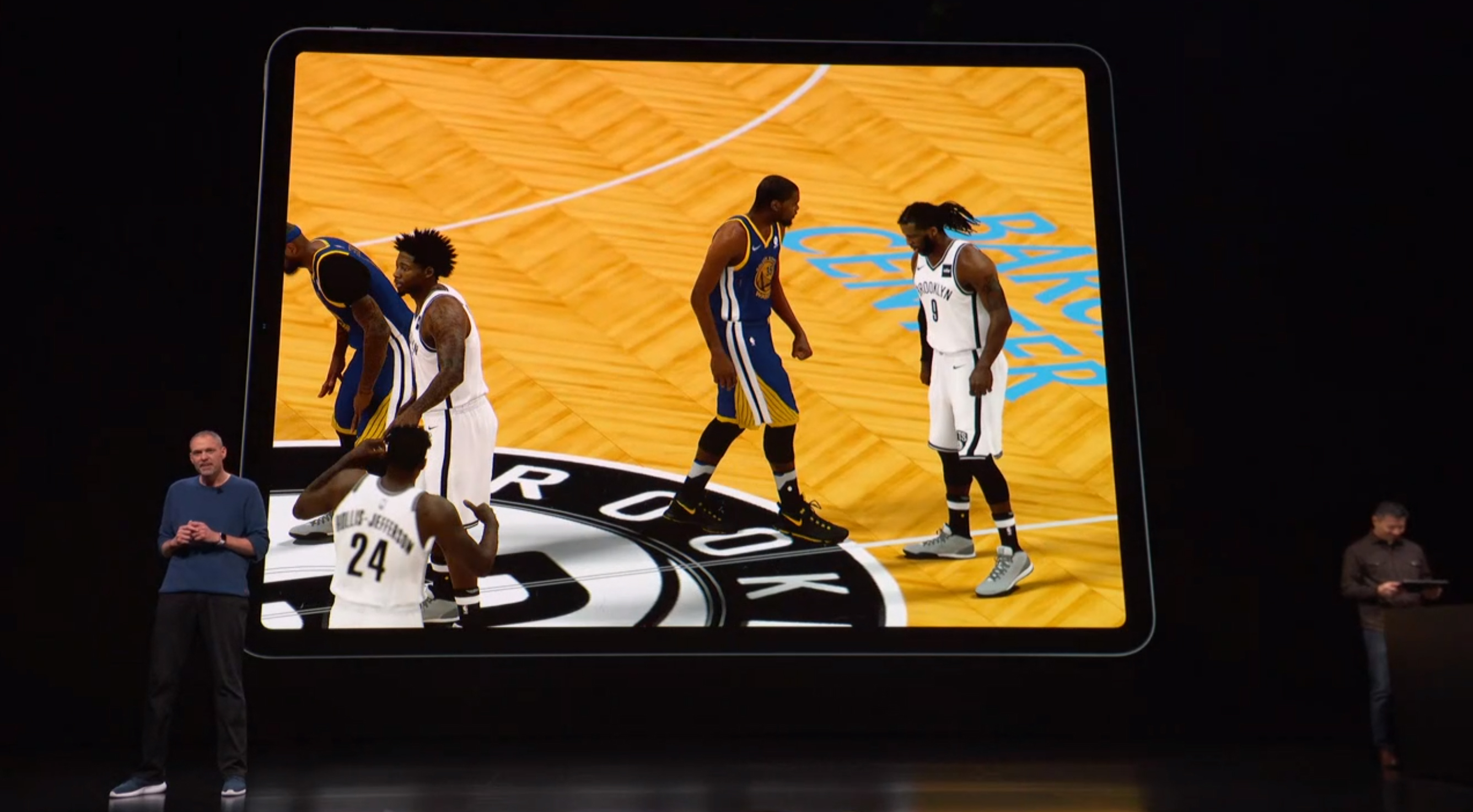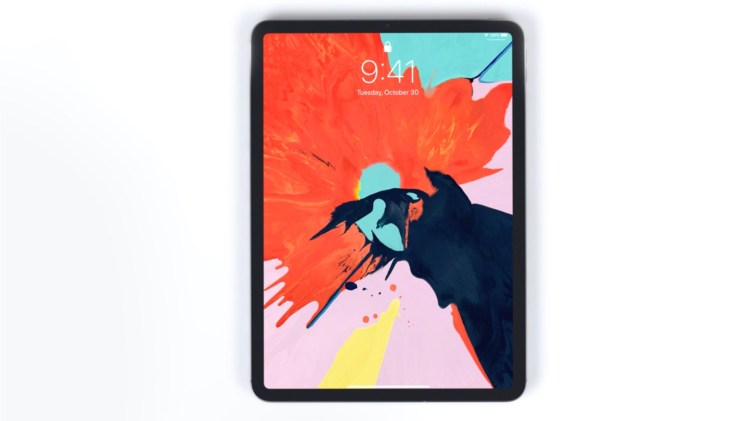Following the usual round of rumors and leaks, Apple today officially announced the 2018 versions of its 10.5-inch and 12.9-inch iPad Pros — its first tablets to ditch the classic Home button and Touch ID fingerprint scanner in favor of a TrueDepth front camera with Face ID. iPad Pros are currently Apple’s flagship tablets, serving as the vanguards for features that will later trickle down into less expensive models.
As expected, the new tablets feature dramatically streamlined front designs with even higher screen to bezel ratios than before. Whereas the iPad Pros’ top and bottom bezels used to be roughly 0.7 inches each, they’re now around 0.3 inches each, matching the tablets’ side bezels. Just like the Apple Watch Series 4, iPhone X, XR, XS, and XS Max, Apple has rounded each iPad Pro screen’s corners to mirror its curved housing.
The screen is an Apple Liquid Retina display, a technology debuted in the iPhone XR. Apple has upped the 10.5-inch model’s screen size to 11 inches with additional pixels, now at 2388 x 1668 resolution. Whereas the prior 10.5-inch model was 9.8 inches tall, 6.8 inches wide, and 0.24 inches thick, the new model is slightly shorter, measuring 9.74 inches tall, 7.02 inches wide, and 0.23 inches thick. It now weighs 1.03 pounds.
By contrast, the 12.9-inch model has the same screen size and resolution, within a considerably smaller housing. Previously, the 12.9-inch model measured 12 inches tall, 8.68 inches wide, and 0.27 inches thick, but it now is 11.04 inches tall, 8.46 inches wide, and 0.23 inches thick — roughly the footprint of an 8.5-inch by 11-inch sheet of paper, a serious milestone for such a large-screened tablet. It weighs 1.4 pounds with cellular features, 1.39 pounds without.
June 5th: The AI Audit in NYC
Join us next week in NYC to engage with top executive leaders, delving into strategies for auditing AI models to ensure fairness, optimal performance, and ethical compliance across diverse organizations. Secure your attendance for this exclusive invite-only event.

Notably, there is no “notch” for the front-facing TrueDepth camera, which is located at the top of the device’s screen when held in portrait mode, and capable of snapping 7MP selfies. Thanks to the TrueDepth hardware, the iPad Pro will support not only Face ID but also the Animoji and Memoji features introduced last year with the iPhone X. An improved rear camera with 12MP resolution should deliver the same performance as the iPhone XR’s single-lens rear camera.
Apple’s latest iPad Pro chassis design is the family’s most significant change since the first iPad mini debuted in 2012, defining the shape of every iPad, iPad Air, iPad mini, and iPad Pro model that followed until now. For the first time since the original iPad launched in 2010, Apple has returned to a tablet housing with flat rather than curved sides, though it has the flat back found in modern models — albeit with a slight camera protrusion from the back.
Physical controls remain only for the Sleep/Wake button and volume buttons, all found in the iPad’s upper-right corner, while speaker grates are on the top and bottom edges. A USB-C port is at the bottom, and the tablet is capable of charging devices magnetically attached to its edge. There’s also a Smart Connector on the back above the USB-C port. Apple is still promising 10 hours of battery life per charge, which has been standard across the iPad line for years.

Above: NBA 2K for iPad.
Perhaps the most significant internal improvement of the new iPad Pros is Apple’s A12X processor, a faster version of the A12 Bionic found in the latest iPhones. While the prior-generation iPad Pros used Apple’s A10X Fusion, a chip that took two A-series generations to surpass, the new models feature the A12X Bionic — a processor Apple suggests is equivalent for gaming to Microsoft’s Xbox One S, in a tablet form factor.
Described as a “monster” by Apple, the A12X Bionic is likely to make the iPad Pro the fastest consumer tablet on the planet. It has more than 10 billion transistors and boasts speeds roughly comparable to mid-range notebook computers — faster than 92 percent of all portable PCs sold in the last 12 months. Armed with 8 cores, the A12X Bionic promises a 90 percent increase in CPU performance and 2 times boost in GPU performance.
The new iPad Pros come with up to 1TB of storage capacity, and the integrated USB-C connector can be used for bidirectional power — it can charge external devices, as well as charging from them. The devices also feature four-speaker audio with woofer and tweeter pairs on each side, though the 3.5mm headphone port has officially disappeared from these iPads for the first time in series history.
Each iPad Pro comes with Bluetooth 5.0 and Wi-Fi 5 wireless capabilities. For a $150 premium, cellular models promise Gigabit LTE speeds; Apple says that the new iPads include eSIM support, and a physical nano-SIM tray is on the same edge as the volume buttons.

Apple’s latest iPad Pros have higher starting prices than the prior models, and their highest-capacity versions are brutally expensive. The 11-inch model now starts at $799, compared with $649 for the 64GB 10.5-inch version, and the 12.9-inch now starts at $999, climbing up to $1699 for a 1TB model with cellular capabilities. All of the new iPad Pro models are available for preorder now and will be available in stores starting on November 7.
If the price increases turn you off, Apple is continuing to offer the prior iPad Pro 10.5-inch model at its original $649 price for 64GB. The iPad mini 4 remains in the lineup, as well, at its prior $399 price for 128GB of capacity.

